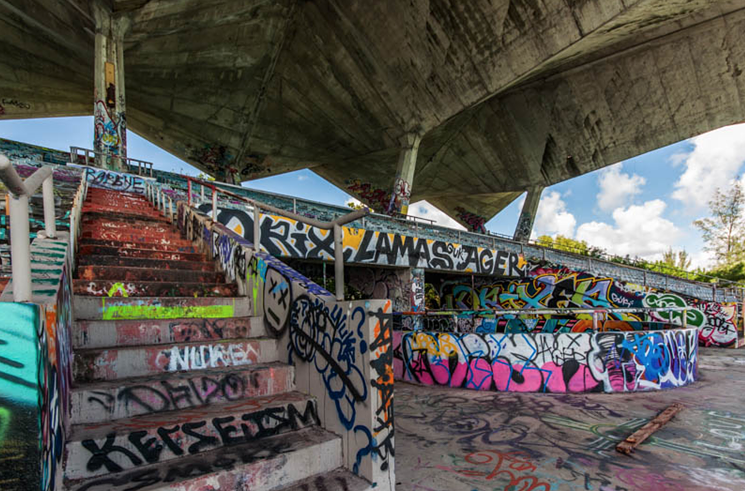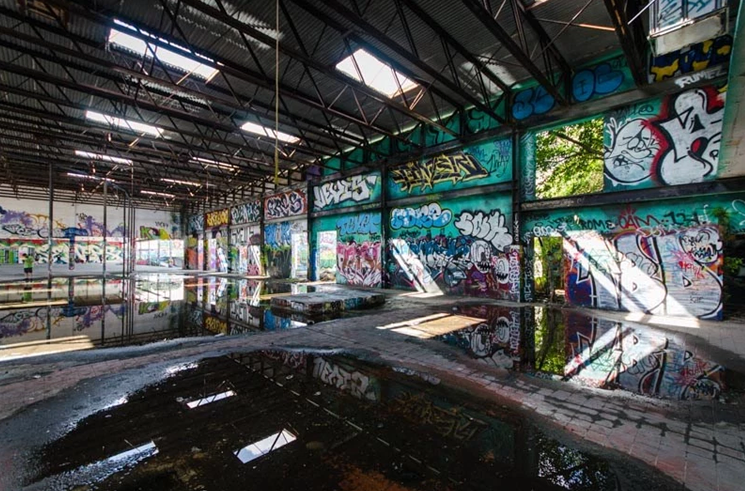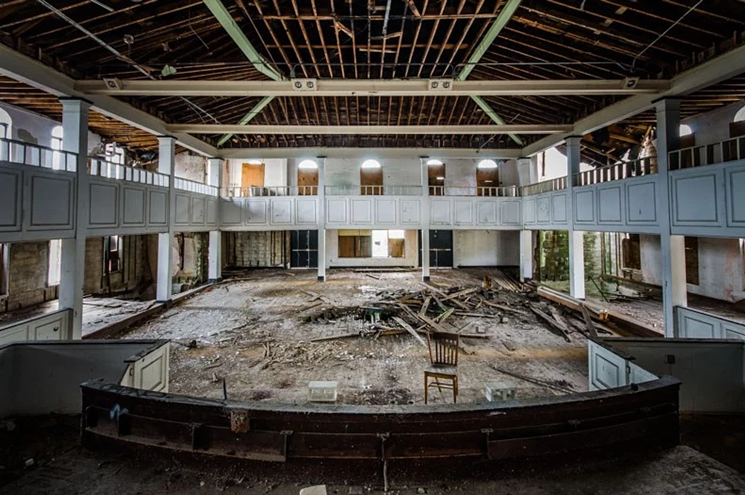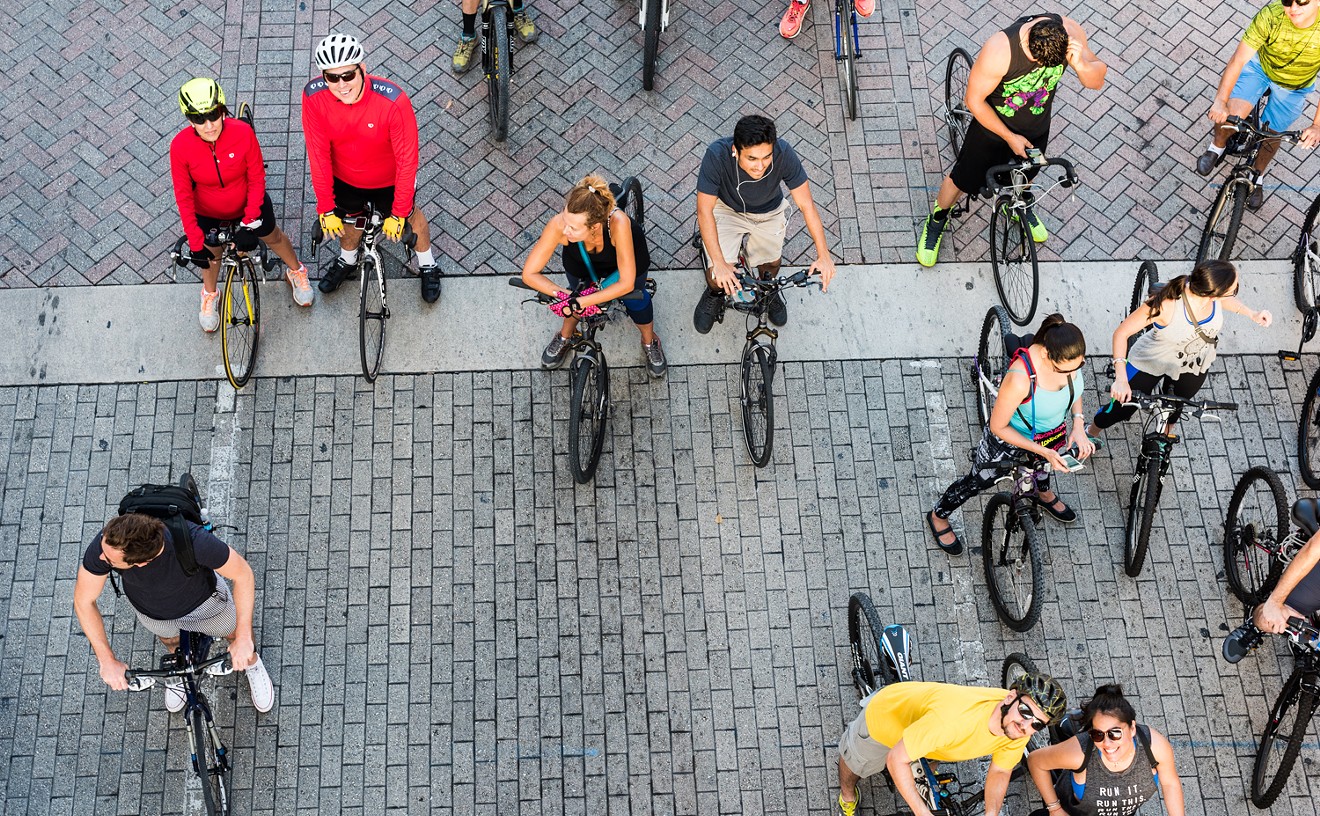1. Nike Missile IFC Site HM-40, B Battery
Following a recommencement of the Soviet nuclear program in 1961, President John F. Kennedy put into motion what would soon be the largest nuclear-weapons testing program in the United States: Operation Dominic. The Nike Hercules missile test is regarded to be the last true U.S. atmospheric nuclear test, and B Battery was initially placed just outside Everglades National Park in 1962, next to A Battery. In 1965, it was relocated to North Key Largo.
The HM-40 site was equipped with five radars, including a high-powered acquisition radar housed in a geodesic fiberglass dome. The site was decommissioned in 1979, and ownership was passed from the Army to the U.S. Fish and Wildlife Service to create Crocodile Lake National Wildlife Refuge in 1980. In recent years, public access to the site has been limited by the installation of tall fencing and stern signage. As one commenter at abandonedfl.com puts it, there’s “not much left to see that nature hasn’t taken back.”

Courtesy of abandonedfl.com
Built on land donated to the city by the Matheson family, Miami Marine Stadium was constructed in 1963 for powerboat racing events. The stadium hosted nationally televised competitions such as the Bill Muncey Invitational and a wide array of events ranging from boxing to classical concerts. It’s a strange place with a wacky history: President Richard Nixon and Sammy Davis Jr. once had a famous hug there.
Attendance gradually slowed to a trickle, and by the early '90s, powerboat racing was all washed up and the stadium began to deteriorate. Hurricane Andrew further damaged the structure in 1992. After engineers found cracks in the foundation, the stadium had to be condemned. The site is now awaiting a restoration to its former glory and in the meantime has enjoyed a more niche, underground purpose: Its walls hold innumerable graffiti tags and murals, a well-known stomping ground for Miami street artists.

Courtesy of abandonedfl.com
After the beginning of the space race following the 1957 launch of Sputnik, the U.S. Air Force in 1963 gave Aerojet General, a prominent rocket and missile propulsion manufacturer, a $3 million contract to start a manufacturing and testing site in Homestead. The company paid just $2.50 per acre annually for the plant, located five miles from Everglades National Park.
Between 1965 and 1967, the plant fired three test rockets: SL-1, 2, and 3. The last was the largest solid-fuel rocket ever, and near burnout, the rocket nozzle was ejected. The component sprayed propellant made of hydrochloric acid over homes and farmland in the Everglades and Homestead, causing many locals to complain about damage and ruined crops. In 1969, following a NASA decision to go with liquid-fueled engines for Apollo’s Saturn V rockets, the plant was abandoned. In early 2010, plans were made to fix the damage the site had done to the wetlands, and in 2013, the silo was covered with concrete bridge supports.
4. Coconut Grove Playhouse
One of the oldest sites on this list, the Coconut Grove Playhouse was constructed as a cinema called the Player's State Theater, which opened in 1927. It was renowned as the second air-conditioned theater on Florida’s east coast and home to the largest Wurlitzer organ in the nation. In the 1950s, oil entrepreneur George Engle spent more than $1 million in renovations to convert the space to a live theater and reopened it in 1956.
In the 50 years that followed, the space hosted many famous performers, from Bea Arthur and Ethel Merman to Hume Cronyn and others. The good times lasted until 2006, when the playhouse was forced to close because of debt. In January 2014, however, Miami-Dade County was granted permission from the state to take over the building. After a lengthy bidding process, commissioners voted for Arquitectonica to revive the space with a $20 million voter-approved bond. The building is deemed a historical landmark and thus cannot be fully demolished, but many locals are concerned that the renovation won’t preserve key aspects of the historic playhouse.

Courtesy of abandonedfl.com
Founded in 1905 by pharmacist Claud A. Hatcher, Royal Crown Company Inc. (originally Union Bottling Works) began with the flagship brand Chero-Cola and changed names to the Nehi Corporation following the success of the Nehi line of sodas in the 1920s. Following a successful rebranding in 1955, the company changed names a second time, to Royal Crown Cola Co.
The Miami plant was built in 1935 in what is now the Wynwood Arts District, but many features were added in the '60s and '70s. In 1984, following a management switch, corporate headquarters for RC were relocated from Atlanta to Miami. Following a string of lawsuits for using company funds to line their own pockets, then-owners Victor Posner and his son in 1993 were banned by a federal judge from ever running any public company. The Miami plant was closed, and graffiti and decay began to take root. The property is now owned by the Mana Urban Arts Project and has lately hosted arts and music events. Films such as 2 Fast 2 Furious have also shot scenes there.

Courtesy of abandonedfl.com
Originally the First Baptist Church, built in 1935, the building was acquired 50 years later by Yahweh ben Yahweh — the founder and leader of the Nation of Yahweh, a black supremacist religious movement founded in 1979 and headquartered in Liberty City. The religion emphasized that God and all the prophets were black, and identified whites and particularly Jews as infidels. The founder also claimed himself to be the living son of God, Yahweh, and inspired a fervent, cultlike loyalty among members. Applicants were said to have been required to kill a “white devil” and bring Yahweh a body part as proof in order to be inducted, earning members the name “Death Angels.”
Yahweh served an 11-year prison term from 1990 to 2001 for conspiracy in more than a dozen murders. He was acquitted of first-degree murder charges in 1992. Yahweh was on strict parole, however, until a few months before his death, when his attorney successfully petitioned the U.S. District Court to allow him to “die with dignity.” The building changed hands throughout the '90s until renovation was halted in 2004 by Miami city inspectors. The site has become a target for burglars and also receives posted flyers from former Yahweh members who wish to lay claim to the building. (The religious sect once housed there now endorses nonviolence and acceptance of all races.)












